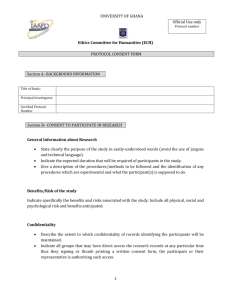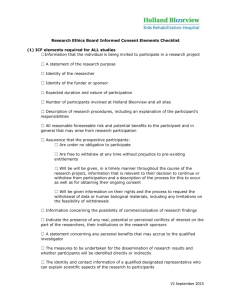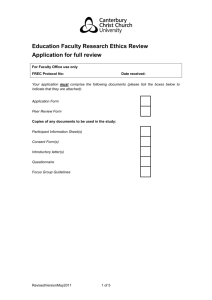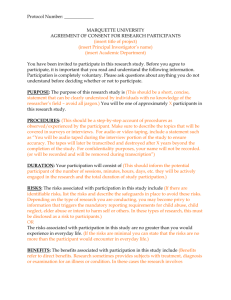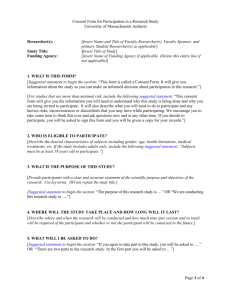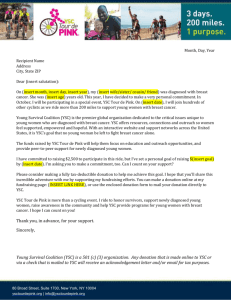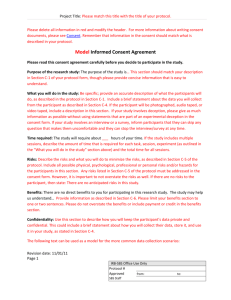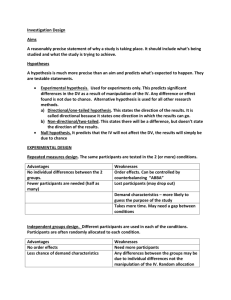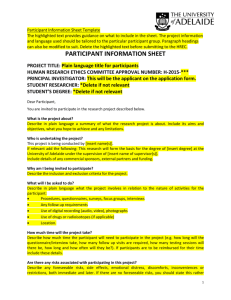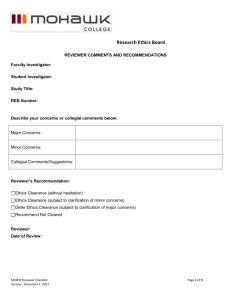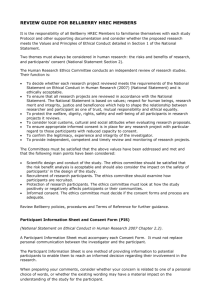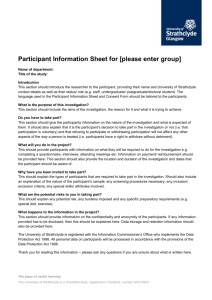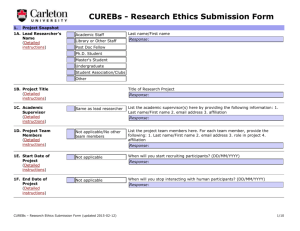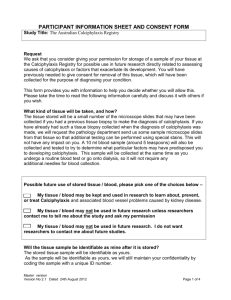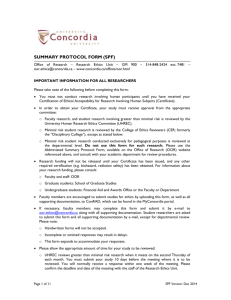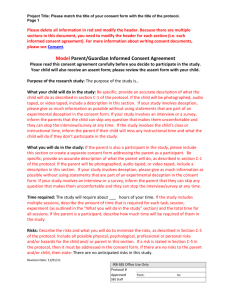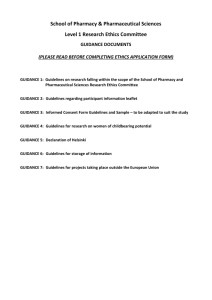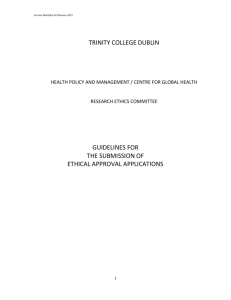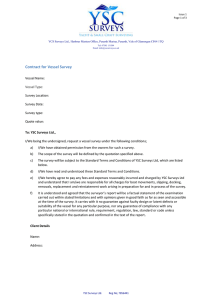GVRSF Project Ethics Screen
advertisement
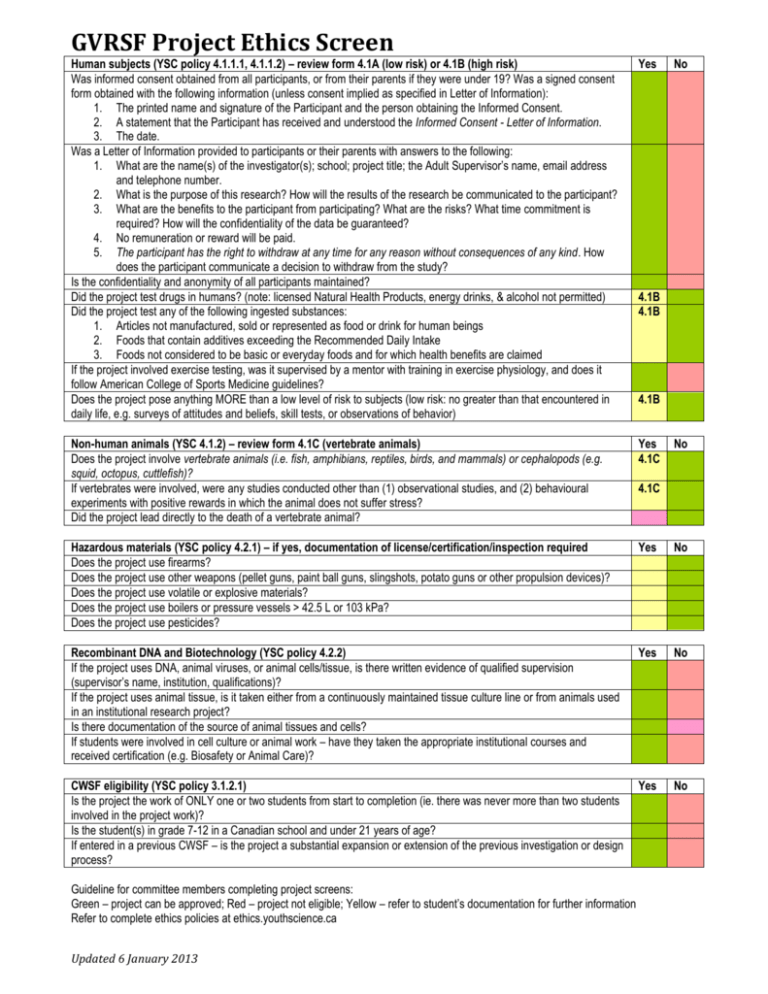
GVRSF Project Ethics Screen Human subjects (YSC policy 4.1.1.1, 4.1.1.2) – review form 4.1A (low risk) or 4.1B (high risk) Was informed consent obtained from all participants, or from their parents if they were under 19? Was a signed consent form obtained with the following information (unless consent implied as specified in Letter of Information): 1. The printed name and signature of the Participant and the person obtaining the Informed Consent. 2. A statement that the Participant has received and understood the Informed Consent - Letter of Information. 3. The date. Was a Letter of Information provided to participants or their parents with answers to the following: 1. What are the name(s) of the investigator(s); school; project title; the Adult Supervisor’s name, email address and telephone number. 2. What is the purpose of this research? How will the results of the research be communicated to the participant? 3. What are the benefits to the participant from participating? What are the risks? What time commitment is required? How will the confidentiality of the data be guaranteed? 4. No remuneration or reward will be paid. 5. The participant has the right to withdraw at any time for any reason without consequences of any kind. How does the participant communicate a decision to withdraw from the study? Is the confidentiality and anonymity of all participants maintained? Did the project test drugs in humans? (note: licensed Natural Health Products, energy drinks, & alcohol not permitted) Did the project test any of the following ingested substances: 1. Articles not manufactured, sold or represented as food or drink for human beings 2. Foods that contain additives exceeding the Recommended Daily Intake 3. Foods not considered to be basic or everyday foods and for which health benefits are claimed If the project involved exercise testing, was it supervised by a mentor with training in exercise physiology, and does it follow American College of Sports Medicine guidelines? Does the project pose anything MORE than a low level of risk to subjects (low risk: no greater than that encountered in daily life, e.g. surveys of attitudes and beliefs, skill tests, or observations of behavior) Yes Non-human animals (YSC 4.1.2) – review form 4.1C (vertebrate animals) Does the project involve vertebrate animals (i.e. fish, amphibians, reptiles, birds, and mammals) or cephalopods (e.g. squid, octopus, cuttlefish)? If vertebrates were involved, were any studies conducted other than (1) observational studies, and (2) behavioural experiments with positive rewards in which the animal does not suffer stress? Did the project lead directly to the death of a vertebrate animal? Yes 4.1C Hazardous materials (YSC policy 4.2.1) – if yes, documentation of license/certification/inspection required Does the project use firearms? Does the project use other weapons (pellet guns, paint ball guns, slingshots, potato guns or other propulsion devices)? Does the project use volatile or explosive materials? Does the project use boilers or pressure vessels > 42.5 L or 103 kPa? Does the project use pesticides? Yes No Recombinant DNA and Biotechnology (YSC policy 4.2.2) If the project uses DNA, animal viruses, or animal cells/tissue, is there written evidence of qualified supervision (supervisor’s name, institution, qualifications)? If the project uses animal tissue, is it taken either from a continuously maintained tissue culture line or from animals used in an institutional research project? Is there documentation of the source of animal tissues and cells? If students were involved in cell culture or animal work – have they taken the appropriate institutional courses and received certification (e.g. Biosafety or Animal Care)? Yes No CWSF eligibility (YSC policy 3.1.2.1) Is the project the work of ONLY one or two students from start to completion (ie. there was never more than two students involved in the project work)? Is the student(s) in grade 7-12 in a Canadian school and under 21 years of age? If entered in a previous CWSF – is the project a substantial expansion or extension of the previous investigation or design process? Yes No Guideline for committee members completing project screens: Green – project can be approved; Red – project not eligible; Yellow – refer to student’s documentation for further information Refer to complete ethics policies at ethics.youthscience.ca Updated 6 January 2013 No 4.1B 4.1B 4.1B No 4.1C
